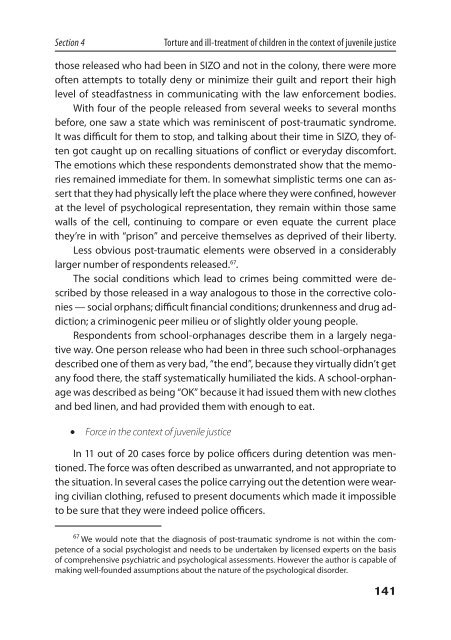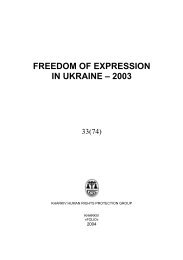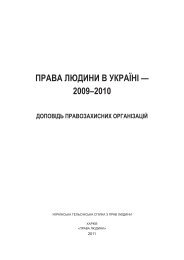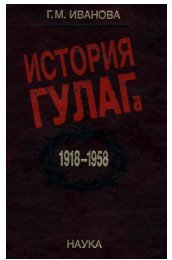TORTURE AND ILL-TREATMENT OF CHILDREN IN UKRAINE
TORTURE AND ILL-TREATMENT OF CHILDREN IN UKRAINE
TORTURE AND ILL-TREATMENT OF CHILDREN IN UKRAINE
- No tags were found...
You also want an ePaper? Increase the reach of your titles
YUMPU automatically turns print PDFs into web optimized ePapers that Google loves.
Section 4Torture and ill-treatment of children in the context of juvenile justicethose released who had been in SIZO and not in the colony, there were moreoften attempts to totally deny or minimize their guilt and report their highlevel of steadfastness in communicating with the law enforcement bodies.With four of the people released from several weeks to several monthsbefore, one saw a state which was reminiscent of post-traumatic syndrome.It was difficult for them to stop, and talking about their time in SIZO, they oftengot caught up on recalling situations of conflict or everyday discomfort.The emotions which these respondents demonstrated show that the memoriesremained immediate for them. In somewhat simplistic terms one can assertthat they had physically left the place where they were confined, howeverat the level of psychological representation, they remain within those samewalls of the cell, continuing to compare or even equate the current placethey’re in with “prison” and perceive themselves as deprived of their liberty.Less obvious post-traumatic elements were observed in a considerablylarger number of respondents released. 67 .The social conditions which lead to crimes being committed were describedby those released in a way analogous to those in the corrective colonies— social orphans; difficult financial conditions; drunkenness and drug addiction;a criminogenic peer milieu or of slightly older young people.Respondents from school-orphanages describe them in a largely negativeway. One person release who had been in three such school-orphanagesdescribed one of them as very bad, “the end”, because they virtually didn’t getany food there, the staff systematically humiliated the kids. A school-orphanagewas described as being “OK” because it had issued them with new clothesand bed linen, and had provided them with enough to eat.• Force in the context of juvenile justiceIn 11 out of 20 cases force by police officers during detention was mentioned.The force was often described as unwarranted, and not appropriate tothe situation. In several cases the police carrying out the detention were wearingcivilian clothing, refused to present documents which made it impossibleto be sure that they were indeed police officers.67 We would note that the diagnosis of post-traumatic syndrome is not within the competenceof a social psychologist and needs to be undertaken by licensed experts on the basisof comprehensive psychiatric and psychological assessments. However the author is capable ofmaking well-founded assumptions about the nature of the psychological disorder.141
















